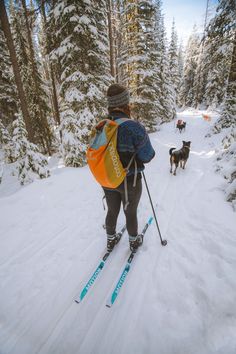How to Cross Country Ski

Introduction
Cross-country skiing is a popular winter sport that provides an excellent full-body workout while allowing you to explore the great outdoors. Whether you’re a beginner or a seasoned skier, this guide will teach you how to cross-country ski using both classic and skate techniques.
Getting Started: Equipment and Clothing
1. Skis: Classic skis are narrower and offer more grip for gliding, whereas skate skis are wider and optimized for skating technique.
2. Boots: Ensure your boots match your skiing style (classic or skate) and are comfortable.
3. Bindings: Compatible with your boots and skis, they connect your feet to the skis.
4. Poles: For classic skiing, poles should reach your armpits; for skate skiing, poles should reach between your chin and nose.
5. Clothing: Dress in layers, wear moisture-wicking base layers and make sure you have warm gloves/mittens, a hat, and high-quality socks.
Preparing for Your Adventure
1. Choose the right trail: Start with groomed trails suitable for your skill level (beginners should look for flatter terrain).
2. Check weather conditions: Weather can significantly impact both trail conditions as well as your enjoyment.
3. Groomed vs ungroomed trails: For beginners, groomed trails are recommended (packed down snow and clearly defined tracks).
4. Safety first: Ski with a buddy if possible, carry a map or GPS navigation device, use sunscreen, and bring water/snacks.
Classic Cross-Country Technique
1. Diagonal stride:
– Start in a relaxed upright stance with weight distributed evenly on both feet.
– Push off one ski while extending the opposite arm forward with pole planted next to the leading foot.
– Shift weight entirely onto gliding ski, maintaining balance over the glide leg.
– Return leg back to starting position, bending the knee, while pushing off with the opposite arm and leg.
– Repeat the motion, alternating arms and legs.
2. Double pole plant:
– Both poles are planted at the same time in between strides for extra propulsion.
– Bend at the waist and drive your body forward while pulling downward and backward on the poles.
Skate Skiing Technique
1. V1 skate technique:
– In a wide stance, push off from one ski diagonally, transferring weight to other ski, forming a V-shape.
– Plant the opposite pole alongside the gliding foot with the arm extended.
– Recover ski to starting position as you prepare to push off on the other side again or follow with a double pole plant for extra speed.
2. V2 skate technique:
– Similar to V1 but with double pole plant occurring during every push off (each ski change).
Wrapping Up
Cross-country skiing is an enjoyable way to experience winter landscapes and stay active. Now that you’ve learned both classic and skate techniques, give it a try and challenge yourself as you progress along cross-country skiing trails. Remember to always prioritize safety and have fun!






